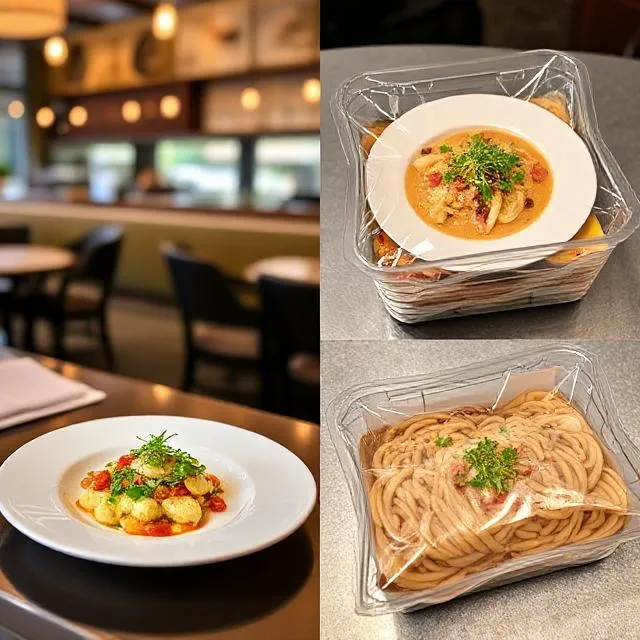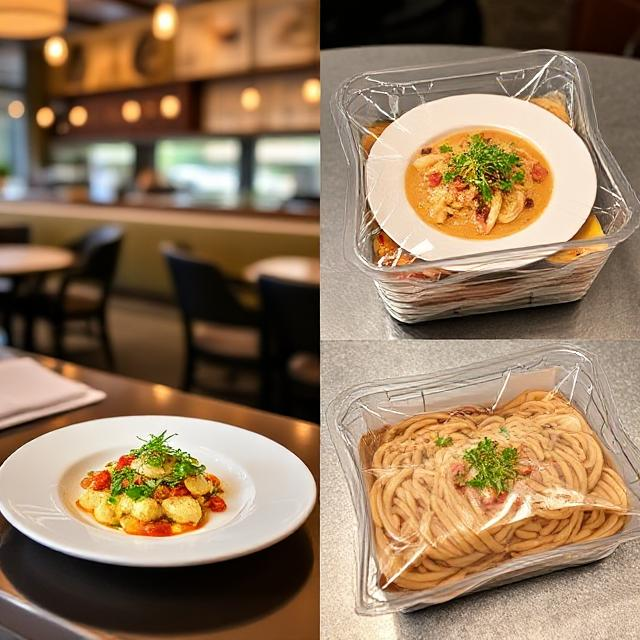
The Importance of Consistency in Food Quality for Delivery Services
In today's fast-paced world, food delivery has become an integral part of the restaurant industry. While convenience is a major draw for customers, the success of any food delivery service hinges on a crucial factor: consistency in food quality.

Ensuring a seamless dining experience: A beautifully plated dish at the restaurant is mirrored perfectly in its delivery packaging, highlighting the commitment to quality and consistency.
Why Consistency Matters
Consistency in food quality means that customers receive the same high-quality experience every time they order, regardless of when or where they place their order. This is paramount for several reasons:
Meeting Expectations: Customers ordering delivery have certain expectations. They expect the food to taste the same, look the same, and have the same temperature as if they were dining at the restaurant itself. Consistency ensures these expectations are met, leading to customer satisfaction.
Building Trust and Loyalty: When a restaurant consistently delivers high-quality food, it builds trust with its customers. Customers are more likely to become loyal patrons if they know they can rely on the restaurant to deliver a positive experience every time.
Protecting Brand Reputation: Inconsistency can severely damage a restaurant's brand. Negative experiences due to poor food quality can lead to negative reviews and word-of-mouth, which can deter potential customers and harm the restaurant's reputation.
Driving Repeat Business: Consistent quality is a key driver of repeat business. Customers who are consistently satisfied with their delivery experience are more likely to order again, contributing to the restaurant's long-term success.
A comprehensive view of the meticulous food preparation, packaging, and delivery process, ensuring quality and consistency at every stage.
Challenges to Maintaining Consistency
Maintaining consistency in food quality for delivery services can be challenging. Several factors can affect the food's quality during the delivery process, including:
Travel Time: Food can deteriorate during transit, affecting its temperature, texture, and appearance.
Packaging: Inadequate packaging can lead to spills, leaks, and temperature loss.
Delivery Handling: Rough handling during delivery can damage the food presentation.
Strategies for Ensuring Consistency
Restaurants and delivery services can implement several strategies to ensure consistency in food quality:
Standardized Recipes and Procedures: Using standardized recipes and preparation procedures helps ensure that each dish is made the same way every time.
Quality Control Measures: Implementing quality control checks throughout the food preparation and packaging process can help identify and address any potential issues.
Proper Packaging: Using appropriate packaging that maintains the food's temperature and prevents damage during transit is crucial.
Delivery Time Optimization: Efficient delivery logistics and route planning can minimize travel time and ensure food arrives fresh.
Training Delivery Staff: Training delivery personnel on proper handling procedures can help prevent damage to the food during delivery.
Restaurant staff diligently package meals for delivery, ensuring each dish is securely packed and beautifully presented.
Conclusion
Consistency in food quality is not just a matter of taste; it's a critical factor for the success and sustainability of food delivery services. By prioritizing consistency, restaurants can meet customer expectations, build trust, protect their brand reputation, and drive repeat business in the competitive food delivery market.


